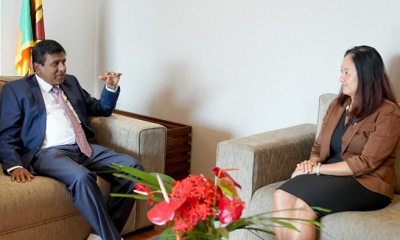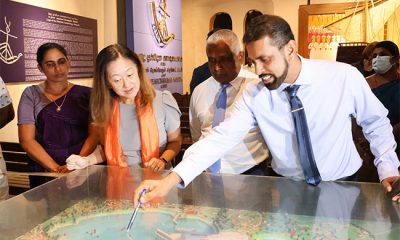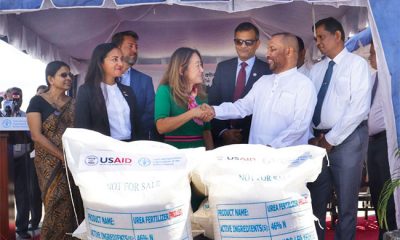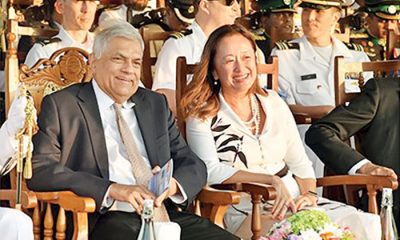Opinion
US double standards displayed by Ambassador Chung:
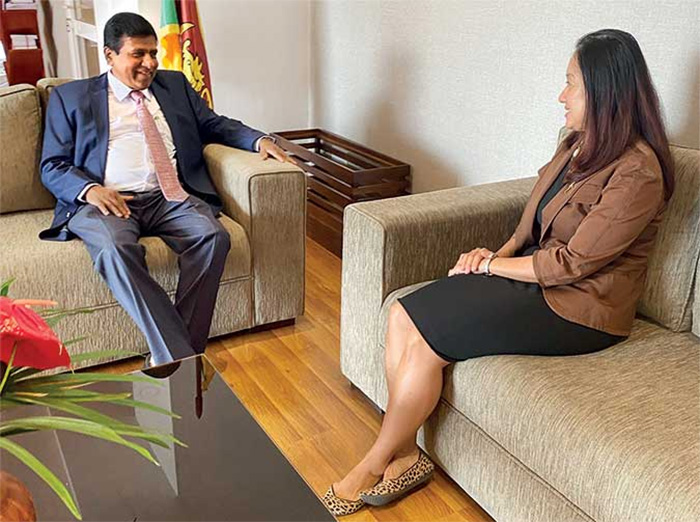
Draconian Patriot Act exposed
By Daya Gamage
Foreign Service National Political Specialist (ret)
U.S. Department of State
Six weeks after the September 11 attacks on American soil, the U.S. Congress passed the “USA/Patriot Act,” nation’s hurried surveillance laws that expanded the government’s authority to check on its own citizens, while simultaneously reducing checks and balances on those powers like judicial oversight, public accountability, and the ability to challenge government searches in court.
The Senate version of the Patriot Act was sent to the floor with no discussion, debate, or hearings. In the House, hearings were held, and a carefully constructed compromise bill emerged with no debate or consultation with rank-and-file members, the House leadership threw out the compromise bill and replaced it with legislation that mirrored the Senate version. Neither discussion nor amendments were permitted, and once again members barely had time to read the bill before they were forced to cast a vote on it.
It should be mentioned that all the obnoxious provisions of the USA PATRIOT ACT were in operation until the promulgation of the Freedom Act of 2015: long fifteen years. In fact, some provisions were preserved in the Freedom Act.
Before I present the draconian provisions of the USA/Patriot Act, it should be noted here how the U.S. Ambassador Julie Chung – when having a discourse with Justice Minister Wijayadasa Rajapakshe – had “expressed her strong desire”, of course on behalf of Washington policymakers, “to see extensive discussions, both public and parliamentary” on Sri Lanka’s proposed Anti-Terrorism Bill which is envisaged to replace the current Prevention of Terrorism Act (PTA).
In a Twitter feed, Ms. Chung referring to what was discussed during that meeting with Minister Rajapakshe on 20 April, noted her concerns with regard to certain aspects of the proposed Bill which fall outside of international standards.
She further highlighted that it is important that “all voices – including civil society, academia, and lawmakers – are considered to ensure the legislation serves as an effective tool for combating terrorism without restricting freedom of expression or assembly.”
These disgraceful double-standards of Washington policymakers and lawmakers – and of course their overseas diplomats – in dealing with Sri Lanka’s ‘national issues’ since the advent of the separatist war in the north and the insurrection in the south in the 1980s are now very broadly dealt with by two personnel who worked within the U.S. Department of State for thirty years in the area of foreign affairs: One is this writer who is a retired Foreign Service National Political Specialist once accredited to the Political Section of the U.S. Embassy in Colombo, and the other, Dr. Robert K. Boggs, a retired Senior Foreign Service (FS) and Intelligence Officer who served as Political Counselor at the Colombo Mission with a very broad knowledge of India’s ‘role’ in Sri Lanka. Their manuscript ‘Defending Democracy: Lessons in Strategic Diplomacy from U.S.-Sri Lankan Relations” is nearing completion with alarming disclosures, provocative analyses and interpretations based on their up-close and personal knowledge and understanding how Washington used ‘double standards’ in handling its foreign relations reducing Sri Lanka to some level of a client state. Sri Lanka’s own infantile behaviour dealing with her foreign relations since the 1980s contributed too to become a client state allowing ‘national issues’ to become ‘global’ ones.
When Ambassador Chung ‘advice’ the Sri Lanka government – through its Justice Minister – to undertake a wider and broad scrutiny of the proposed anti-terrorism legislation, Washington’s ‘double-standards’ are well exposed when our memory goes back to the manner in which it steamrolled the USA PATRIOT ACT in September 2001 documented above.
This writer doesn’t see any Sri Lankan lawmaker questioning Ambassador Julie Chung, purposely ignoring the manner in which the USA/Patriot Act came into America’s statute books with draconian features, enforced for fifteen years until the Freedom Act was brought in.
The American Civil Liberties Union (ACLU) had expressed that the “Congress and the Administration acted without any careful or systematic effort to determine whether weaknesses in our surveillance laws had contributed to the attacks, or whether the changes they were making would help prevent further attacks. Indeed, many of the act’s provisions have nothing at all to do with terrorism”.
The USA PATRIOT ACT increased the government’s surveillance powers in four areas:
Records searches. It expands the government’s ability to look at records on an individual’s activity being held by third parties. (Section 215)
Secret searches. It expands the government’s ability to search private property without notice to the owner. (Section 213)
Intelligence searches. It expands a narrow exception to the Fourth Amendment that had been created for the collection of foreign intelligence information (Section 218).
“Trap and trace” searches. It expands another Fourth Amendment exception for spying that collects “addressing” information about the origin and destination of communications, as opposed to the content (Section 214).
It is frustrating to remind Ambassador Julie Chung, and Washington policymakers who guide her, the undemocratic features in the US anti-terrorism act when she uses ‘double standards’ – as Washington always engage dealing with international affairs of which very broadly analysed in Robert Boggs-Daya Gamage’s forthcoming book – to advocate that there exist certain provisions in the Sri Lanka-proposed Anti-Terrorism Bill ‘outside of international standards’.
When the Bush administration brought the Patriot Act, it had scant regard for ‘international standards’.
There are three overlying undemocratic aspects of the Patriot Act: torturing suspects, indefinite holding of suspects, and spying on citizens.
How did Washington round-up Sri Lanka government during Ranil Wickremasinghe’s premiership at the turn of this century to engage in torture in “third-party countries” that were not part of the Geneva Convention? Do we have to remind Ambassador Julie Chung of this?
During the 2002-2004 peace negotiations, (between the Sri Lanka government and LTTE mediated by Norway and the U.S. directly involving in it) Washington did not scruple to use its influence to persuade the Wickremasinghe’s Government, which had foreign and defence portfolios under it, to help the U.S. avoid accountability before the International Criminal Court (ICC). In the fall of 2002 various State Department officials pressed Prime Minister Wickremesinghe repeatedly to sign a bilateral agreement under Article 98 of the Rome Statute, the treaty that in 1998 established the ICC. Under the treaty, such a bilateral agreement would immunise the citizens of each signatory state from being surrendered by the other to the jurisdiction of the (ICC) Court. The Wickremasinghe government did sign such an agreement in November 2002.
It was not coincidental that in October 2002 the U.S. and coalition partners launched a “shock and awe” bombing campaign and invasion of Iraq as part of the Global War on Terrorism (GWOT). At the same time, more than 9000 U.S. troops were battling Taliban militants in Afghanistan. The Bush administration clearly wanted to shield U.S. soldiers from ICC prosecution for inevitable charges of war crimes. In a report in 2016 the ICC’s Office of the Prosecutor found “a reasonable basis to believe” that since May 2003 “at least 54 detained persons” in Afghanistan were subjected to grave crimes by U.S. armed forces, including “the war crimes of torture and cruel treatment.” The same report further alleged that from 2003 to 2004 members of the CIA committed grave crimes, including “rape and/or sexual violence” against “at least 24 detained persons” in Afghanistan and other states. Measures taken by Washington to protect its combatants abroad from criminal accountability are particularly questionable in light of subsequent USG pressure on Sri Lanka–a signatory of an Article 98 agreement–to submit to international investigations for war crimes. U.S. hypocrisy and double-standards well displayed.
In August 2003 Prime Minister Wickremasinghe covertly authorized the USG’s use of Sri Lankan airspace and Bandaranaike International Airport (BIA) for Washington’s so-called “extraordinary rendition and detention programme.” This meant that the CIA could use the airport for the transfer of prisoners to the custody of other foreign governments or to secret CIA prisons outside the U.S. known as “black sites.” Washington engaged in this practice when in fact, extraordinary rendition and detention is clearly prohibited by the United Nations Convention Against Torture and Other Forms of Cruel, Inhuman or Degrading Treatment.
There were at least two flights during June and August 2003 that used BIA to transport terrorist suspects. One flight operated by Richmor Aviation (a company that operated flights for the CIA for extraordinary rendition) is known to have landed in Sri Lanka during June 19-20, 2003 shortly after the apprehension in central Thailand of Mohammed Farik Bin Amin, alias Zubair Zaid, a Malaysian who is alleged to have been a senior member of Jemaah Islamiyah and al Qaeda. Documents inspected by this writer and his co-author Robert Boggs for their manuscript show that another Richmor aircraft flew from Washington, DC to Bangkok, and then transited BIA on August 13-14 before flying on to Afghanistan, Dubai and Europe. That flight coincided with the capture in Thailand of alleged Indonesian terrorist leader Riduan Isamuddin (a.k.a. Hambali) and Malaysian Mohammed Nazir Bin Lep, (a.k.a. Lillie). All three of these men reportedly were later detained and interrogated at CIA black sites and were later transferred to U.S. custody at Guantanamo Bay. Also in August 2002, the Sri Lanka government arrested a person wanted by the U.S. who was hiding in Sri Lanka and handed him over to the CIA.
The above is to remind Ambassador Chung of the manner in which Washington executed the Global War on Terrorism (GWOT) when she and her Washington-guided policymakers engage in ‘double-standards’ in ‘advising’ Sri Lanka how to draft ‘terrorism legislation’ to ‘keep with international standards’.
Section 802 of the USA PATRIOT ACT made domestic terrorists subject to the same punishments (torture) as international terrorists and defined domestic terrorism as: “An act dangerous to human life” that is a violation of the criminal laws of a state or the United States, if the act appears to be intended to: (i) intimidate or coerce a civilian population; (ii) influence the policy of a government by intimidation or coercion; or (iii) to affect the conduct of a government by mass destruction, assassination or kidnapping.”
The Patriot Act allowed for spying by the United States government on everyday people without warrant, by means of Foreign Intelligence Surveillance Act (FISA) Courts and direct legislation.
The American Civil Liberties Union points out how judicial review or oversight lacked under the Patriot Act: “Judicial oversight of these new powers is essentially non-existent. The government must only certify to a judge – with no need for evidence or proof – that such a search meets the statute’s broad criteria”.
Both domestically and internationally, the Patriot Act set a precedent of undemocratic legislation to prevent terrorism through violations of civil liberties. Through direct amendments and in conjunction with “brother bills,” the Patriot Act allowed for, pushed, and resulted in more undemocratic legislation, ultimately resulting in the US Congress-ratified Freedom Act of 2015.
The first major direct modification was the USA PATRIOT Act Improvement and Reauthorization Act of 2005, which made 14 provisions permanent and extended several controversial sections until 2009, such sections as: 206, which allowed the National Security Agency (NSA) to access FISA Courts and to wiretap any communication of a suspect; the other is Section 215, which allowed the NSA to collect every phone call made to and from the United States; and provisions from the Intelligence Reform and Terrorism Prevention Act of 2004, which “permitted the FISA Court to authorize surveillance and physical searches aimed at foreign nationals who are ‘engaged in international terrorism or activities in preparation for international terrorism”‘.
The biggest specific precedent created by the Patriot Act was the direct transition to the USA Freedom Act of 2015, which corrected some of the abuses allowed by the Patriot Act, but left others unchecked. Many of the major provisions of the Patriot Act were set to expire that year and instead of renewing them, the government introduced a new bill with less controversy. Drafters of the bill claimed that the government could only access certain data after submitting public requests to the FISA Court, marking a big difference from the Patriot Act. In 2015, a few major sections of the Patriot Act were set to expire, including Sections 206 and 215 mentioned above. Even without the Freedom Act, the legality of Section 215 was headed to the Courts regardless, as the United States Court of Appeals for the Second Circuit ruled that the Patriot Act was not enough justification to allow bulk metadata collection (Patriot Act 2017). Luckily, it never had to go farther because Congress scrapped the Patriot Act and got partially rid of that section, but the Freedom Act is by no means innocent of civil liberties violations.
Does Ambassador Julie Chung get it? And does Justice Minister Rajapaksha comprehend?
This clearly shows how the USA PATRIOT ACT of 2001 was in operation for a full fifteen years until certain changes were made in the Freedom Act of 2015.
As described recently by CNN International socio-political news presenter Fareed Zakaria:
“America’s unipolar status has corrupted the country’s foreign policy elite. Our foreign policy is all too often an exercise in making demands and issuing threats and condemnations. There is very little effort made to understand the other side’s views or actually negotiate. . . . All this evokes the inertia of an aging empire. Today, our foreign policy is run by insular elite that operates by mouthing rhetoric to please domestic constituencies—and seems unable to sense that the world out there is changing, and fast.” (xA)
The study undertaken by this writer and his co-author Dr. Robert Boggs should help readers to decide to what extent Zakaria’s troubling diagnosis is accurate and, if so, whether the U.S.-Sri Lanka experience offers relevant lessons for remedial action.
This writer’s intention is to underscore Washington’s double standards – well reflected by its ambassador recently when in conversation with Justice Minister Wijayadasa Rajapakshe – to bring some sense to authorities in Colombo.
At the time that the United States was pressuring Colombo to accept “national, international, and hybrid mechanisms to clarify the fate and whereabouts of the disappeared,” the USG had not itself ratified the UN convention of 2006 requiring state party to criminalize enforced disappearances and take steps to hold those responsible to account. Despite a resolution passed by the U.S. House of Representatives on November 19, 2020 calling on the USG to ratify the international convention, this still has not happened. The U.S.’ long history of rejecting accountability is strongly rooted in legislation.
The American Service-Members Protection Act (ASPA) was an amendment to the 2002 Supplemental Appropriations Act (H.R. 4775) passed in response to the 9/11 terrorist attacks and the launch of the so-called Global War on Terror. The ASPA aims to “protect U.S. military personnel and other elected and appointed officials of the Government against prosecution by an international criminal court to which the U.S. is not a party.” Among other defensive provisions the Act prohibits federal, state and local governments and agencies (including courts and law enforcement agencies) from assisting the International Criminal Court in The Hague. It even prohibits U.S. military aid to countries that are parties to the Court. As mentioned above, In 2002, during the administration of Prime Minister Wickremesinghe, the GSL signed with the U.S. an “Article 98 Agreement,” agreeing not to hand over U.S. nationals to the Court.
Washington and its ambassador in Colombo continue to engage in hypocrisy and double-standards when all this evidence is available in the public domain.
(The writer is a retired Foreign Service National Political Specialist of the U.S. Department of State once accredited to the Political Section of the U.S. Embassy, Sri Lanka)
Opinion
Child food poverty: A prowling menace
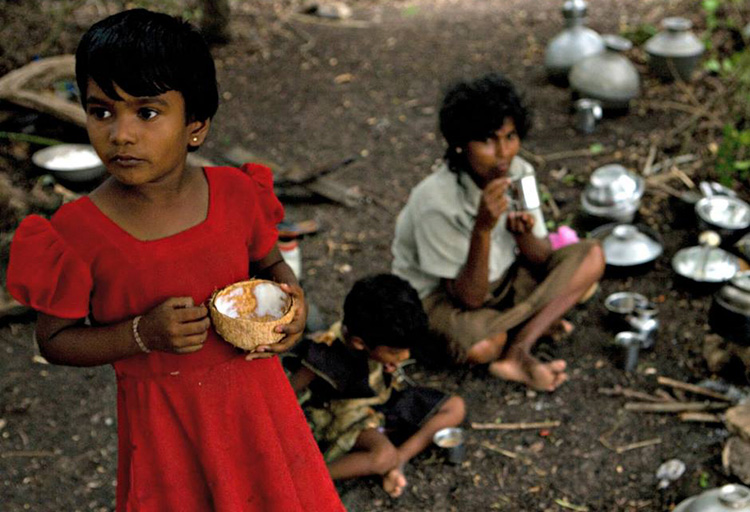
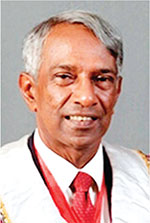 by Dr B.J.C.Perera
by Dr B.J.C.Perera
MBBS(Cey), DCH(Cey), DCH(Eng), MD(Paed), MRCP(UK), FRCP(Edin),
FRCP(Lon), FRCPCH(UK), FSLCPaed, FCCP, Hony FRCPCH(UK), Hony. FCGP(SL)
Specialist Consultant Paediatrician and Honorary Senior Fellow,
Postgraduate Institute of Medicine, University of Colombo, Sri Lanka.
Joint Editor, Sri Lanka Journal of Child Health
In an age of unprecedented global development, technological advancements, universal connectivity, and improvements in living standards in many areas of the world, it is a very dark irony that child food poverty remains a pressing issue. UNICEF defines child food poverty as children’s inability to access and consume a nutritious and diverse diet in early childhood. Despite the planet Earth’s undisputed capacity to produce enough food to nourish everyone, millions of children still go hungry each day. We desperately need to explore the multifaceted deleterious effects of child food poverty, on physical health, cognitive development, emotional well-being, and societal impacts and then try to formulate a road map to alleviate its deleterious effects.
Every day, right across the world, millions of parents and families are struggling to provide nutritious and diverse foods that young children desperately need to reach their full potential. Growing inequities, conflict, and climate crises, combined with rising food prices, the overabundance of unhealthy foods, harmful food marketing strategies and poor child-feeding practices, are condemning millions of children to child food poverty.
In a communique dated 06th June 2024, UNICEF reports that globally, 1 in 4 children; approximately 181 million under the age of five, live in severe child food poverty, defined as consuming at most, two of eight food groups in early childhood. These children are up to 50 per cent more likely to suffer from life-threatening malnutrition. Child Food Poverty: Nutrition Deprivation in Early Childhood – the third issue of UNICEF’s flagship Child Nutrition Report – highlights that millions of young children are unable to access and consume the nutritious and diverse diets that are essential for their growth and development in early childhood and beyond.
It is highlighted in the report that four out of five children experiencing severe child food poverty are fed only breastmilk or just some other milk and/or a starchy staple, such as maize, rice or wheat. Less than 10 per cent of these children are fed fruits and vegetables and less than 5 per cent are fed nutrient-dense foods such as eggs, fish, poultry, or meat. These are horrendous statistics that should pull at the heartstrings of the discerning populace of this world.
The report also identifies the drivers of child food poverty. Strikingly, though 46 per cent of all cases of severe child food poverty are among poor households where income poverty is likely to be a major driver, 54 per cent live in relatively wealthier households, among whom poor food environments and feeding practices are the main drivers of food poverty in early childhood.
One of the most immediate and visible effects of child food poverty is its detrimental impact on physical health. Malnutrition, which can result from both insufficient calorie intake and lack of essential nutrients, is a prevalent consequence. Chronic undernourishment during formative years leads to stunted growth, weakened immune systems, and increased susceptibility to infections and diseases. Children who do not receive adequate nutrition are more likely to suffer from conditions such as anaemia, rickets, and developmental delays.
Moreover, the lack of proper nutrition can have long-term health consequences. Malnourished children are at a higher risk of developing chronic illnesses such as heart disease, diabetes, and obesity later in life. The paradox of child food poverty is that it can lead to both undernutrition and overnutrition, with children in food-insecure households often consuming calorie-dense but nutrient-poor foods due to economic constraints. This dietary pattern increases the risk of obesity, creating a vicious cycle of poor health outcomes.
The impacts of child food poverty extend beyond physical health, severely affecting cognitive development and educational attainment. Adequate nutrition is crucial for brain development, particularly in the early years of life. Malnutrition can impair cognitive functions such as attention, memory, and problem-solving skills. Studies have consistently shown that malnourished children perform worse academically compared to their well-nourished peers. Inadequate nutrition during early childhood can lead to reduced school readiness and lower IQ scores. These children often struggle to concentrate in school, miss more days due to illness, and have lower overall academic performance. This educational disadvantage perpetuates the cycle of poverty, as lower educational attainment reduces future employment opportunities and earning potential.
The emotional and psychological effects of child food poverty are profound and are often overlooked. Food insecurity creates a constant state of stress and anxiety for both children and their families. The uncertainty of not knowing when or where the next meal will come from can lead to feelings of helplessness and despair. Children in food-insecure households are more likely to experience behavioural problems, including hyperactivity, aggression, and withdrawal. The stigma associated with poverty and hunger can further exacerbate these emotional challenges. Children who experience food poverty may feel shame and embarrassment, leading to social isolation and reduced self-esteem. This psychological toll can have lasting effects, contributing to mental health issues such as depression and anxiety in adolescence and adulthood.
Child food poverty also perpetuates cycles of poverty and inequality. Children who grow up in food-insecure households are more likely to remain in poverty as adults, continuing the intergenerational transmission of disadvantage. This cycle of poverty exacerbates social disparities, contributing to increased crime rates, reduced social cohesion, and greater reliance on social welfare programmes. The repercussions of child food poverty ripple through society, creating economic and social challenges that affect everyone. The healthcare costs associated with treating malnutrition-related illnesses and chronic diseases are substantial. Additionally, the educational deficits linked to child food poverty result in a less skilled workforce, which hampers economic growth and productivity.
Addressing child food poverty requires a multi-faceted approach that tackles both immediate needs and underlying causes. Policy interventions are crucial in ensuring that all children have access to adequate nutrition. This can include expanding social safety nets, such as food assistance programmes and school meal initiatives, as well as targeted manoeuvres to reach more vulnerable families. Ensuring that these programmes are adequately funded and effectively implemented is essential for their success.
In addition to direct food assistance, broader economic and social policies are needed to address the root causes of poverty. This includes efforts to increase household incomes through living wage policies, job training programs, and economic development initiatives. Supporting families with affordable childcare, healthcare, and housing can also alleviate some of the financial pressures that contribute to food insecurity.
Community-based initiatives play a vital role in combating child food poverty. Local food banks, community gardens, and nutrition education programmes can help provide immediate relief and promote long-term food security. Collaborative efforts between government, non-profits, and the private sector are necessary to create sustainable solutions.
Child food poverty is a profound and inescapable issue with far-reaching consequences. Its deleterious effects on physical health, cognitive development, emotional well-being, and societal stability underscore the urgent need for comprehensive action. As we strive for a more equitable and just world, addressing child food poverty must be a priority. By ensuring that all children have access to adequate nutrition, we can lay the foundation for a healthier, more prosperous future for individuals and society as a whole. The fight against child food poverty is not just a moral imperative but an investment in our collective future. Healthy, well-nourished children are more likely to grow into productive, contributing members of society. The benefits of addressing this issue extend beyond individual well-being, enhancing economic stability and social harmony. It is incumbent upon us all to recognize and act upon the understanding that every child deserves the right to adequate nutrition and the opportunity to thrive.
Despite all of these existent challenges, it is very definitely possible to end child food poverty. The world needs targeted interventions to transform food, health, and social protection systems, and also take steps to strengthen data systems to track progress in reducing child food poverty. All these manoeuvres must comprise a concerted effort towards making nutritious and diverse diets accessible and affordable to all. We need to call for child food poverty reduction to be recognized as a metric of success towards achieving global and national nutrition and development goals.
Material from UNICEF reports and AI assistance are acknowledged.
Opinion
Do opinion polls matter?
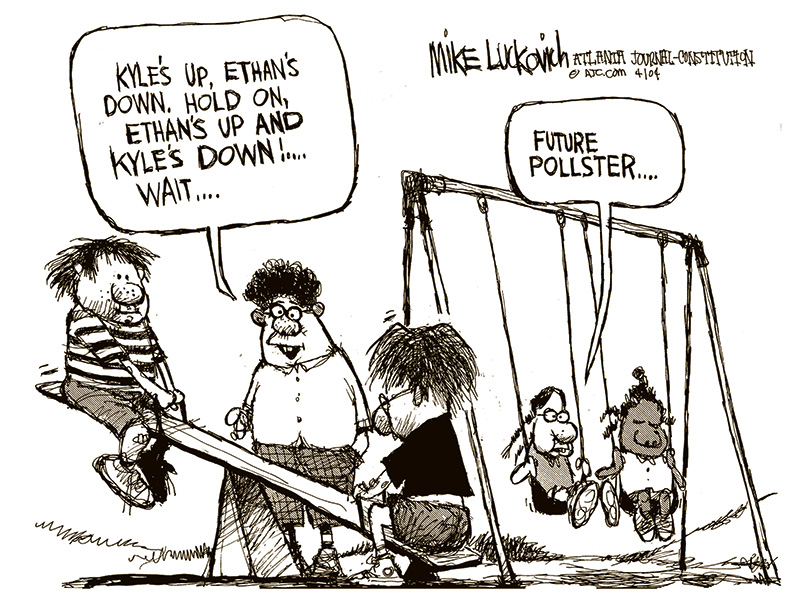
By Dr Upul Wijayawardhana
The colossal failure of not a single opinion poll predicting accurately the result of the Indian parliamentary election, the greatest exercise in democracy in the world, raises the question whether the importance of opinion polls is vastly exaggerated. During elections two types of opinion polls are conducted; one based on intentions to vote, published during or before the campaign, often being not very accurate as these are subject to many variables but exit polls, done after the voting where a sample tally of how the voters actually voted, are mostly accurate. However, of the 15 exit polls published soon after all the votes were cast in the massive Indian election, 13 vastly overpredicted the number of seats Modi’s BJP led coalition NDA would obtain, some giving a figure as high as 400, the number Modi claimed he is aiming for. The other two polls grossly underestimated predicting a hung parliament. The actual result is that NDA passed the threshold of 272 comfortably, there being no landslide. BJP by itself was not able to cross the threshold, a significant setback for an overconfident Mody! Whether this would result in less excesses on the part of Modi, like Muslim-bashing, remains to be seen. Anyway, the statement issued by BJP that they would be investigating the reasons for failure rather than blaming the process speaks very highly of the maturity of the democratic process in India.
I was intrigued by this failure of opinion polls as this differs dramatically from opinion polls in the UK. I never failed to watch ‘Election night specials’ on BBC; as the Big Ben strikes ‘ten’ (In the UK polls close at 10pm} the anchor comes out with “Exit polls predict that …” and the actual outcome is often almost as predicted. However, many a time opinion polls conducted during the campaign have got the predictions wrong. There are many explanations for this.
An opinion poll is defined as a research survey of public opinion from a particular sample, the origin of which can be traced back to the 1824 US presidential election, when two local newspapers in North Carolina and Delaware predicted the victory of Andrew Jackson but the sample was local. First national survey was done in 1916 by the magazine, Literary Digest, partly for circulation-raising, by mailing millions of postcards and counting the returns. Of course, this was not very scientific though it accurately predicted the election of Woodrow Wilson.
Since then, opinion polls have grown in extent and complexity with scientific methodology improving the outcome of predictions not only in elections but also in market research. As a result, some of these organisations have become big businesses. For instance, YouGov, an internet-based organisation co-founded by the Iraqi-born British politician Nadim Zahawi, based in London had a revenue of 258 million GBP in 2023.
In Sri Lanka, opinion polls seem to be conducted by only one organisation which, by itself, is a disadvantage, as pooled data from surveys conducted by many are more likely to reflect the true situation. Irrespective of the degree of accuracy, politicians seem to be dependent on the available data which lend explanations to the behaviour of some.
The Institute for Health Policy’s (IHP) Sri Lanka Opinion Tracker Survey has been tracking the voting intentions for the likely candidates for the Presidential election. At one stage the NPP/JVP leader AKD was getting a figure over 50%. This together with some degree of international acceptance made the JVP behave as if they are already in power, leading to some incidents where their true colour was showing.
The comments made by a prominent member of the JVP who claimed that the JVP killed only the riff-raff, raised many questions, in addition to being a total insult to many innocents killed by them including my uncle. Do they have the authority to do so? Do extra-judicial killings continue to be JVP policy? Do they consider anyone who disagrees with them riff-raff? Will they kill them simply because they do not comply like one of my admired teachers, Dr Gladys Jayawardena who was considered riff-raff because she, as the Chairman of the State Pharmaceutical Corporation, arranged to buy drugs cheaper from India? Is it not the height of hypocrisy that AKD is now boasting of his ties to India?
Another big-wig comes with the grand idea of devolving law and order to village level. As stated very strongly, in the editorial “Pledges and reality” (The Island, 20 May) is this what they intend to do: Have JVP kangaroo-courts!
Perhaps, as a result of these incidents AKD’s ratings has dropped to 39%, according to the IHP survey done in April, and Sajith Premadasa’s ratings have increased gradually to match that. Whilst they are level pegging Ranil is far behind at 13%. Is this the reason why Ranil is getting his acolytes to propagate the idea that the best for the country is to extend his tenure by a referendum? He forced the postponement of Local Governments elections by refusing to release funds but he cannot do so for the presidential election for constitutional reasons. He is now looking for loopholes. Has he considered the distinct possibility that the referendum to extend the life of the presidency and the parliament if lost, would double the expenditure?
Unfortunately, this has been an exercise in futility and it would not be surprising if the next survey shows Ranil’s chances dropping even further! Perhaps, the best option available to Ranil is to retire gracefully, taking credit for steadying the economy and saving the country from an anarchic invasion of the parliament, rather than to leave politics in disgrace by coming third in the presidential election. Unless, of course, he is convinced that opinion polls do not matter and what matters is the ballots in the box!
Opinion
Thoughtfulness or mindfulness?

By Prof. Kirthi Tennakone
ktenna@yahoo.co.uk
Thoughtfulness is the quality of being conscious of issues that arise and considering action while seeking explanations. It facilitates finding solutions to problems and judging experiences.
Almost all human accomplishments are consequences of thoughtfulness.
Can you perform day-to-day work efficiently and effectively without being thoughtful? Obviously, no. Are there any major advancements attained without thought and contemplation? Not a single example!
Science and technology, art, music and literary compositions and religion stand conspicuously as products of thought.
Thought could have sinister motives and the only way to eliminate them is through thought itself. Thought could distinguish right from wrong.
Empathy, love, amusement, and expression of sorrow are reflections of thought.
Thought relieves worries by understanding or taking decisive action.
Despite the universal virtue of thoughtfulness, some advocate an idea termed mindfulness, claiming the benefits of nurturing this quality to shape mental wellbeing. The concept is defined as focusing attention to the present moment without judgment. A way of forgetting the worries and calming the mind – a form of meditation. A definition coined in the West to decouple the concept from religion. The attitude could have a temporary advantage as a method of softening negative feelings such as sorrow and anger. However, no man or woman can afford to be non-judgmental all the time. It is incompatible with indispensable thoughtfulness! What is the advantage of diverting attention to one thing without discernment during a few tens of minute’s meditation? The instructors of mindfulness meditation tell you to focus attention on trivial things. Whereas in thoughtfulness, you concentrate the mind on challenging issues. Sometimes arriving at groundbreaking scientific discoveries, solution of mathematical problems or the creation of masterpieces in engineering, art, or literature.
The concept of meditation and mindfulness originated in ancient India around 1000 BCE. Vedic ascetics believed the practice would lead to supernatural powers enabling disclosure of the truth. Failing to meet the said aspiration, notwithstanding so many stories in scripture, is discernable. Otherwise, the world would have been awakened to advancement by ancient Indians before the Greeks. The latter culture emphasized thoughtfulness!
In India, Buddha was the first to deviate from the Vedic philosophy. His teachers, Alara Kalama and Uddaka Ramaputra, were adherents of meditation. Unconvinced of their approach, Buddha concluded a thoughtful analysis of the actualities of life should be the path to realisation. However, in an environment dominated by Vedic tradition, meditation residually persisted when Buddha’s teachings transformed into a religion.
In the early 1970s, a few in the West picked up meditation and mindfulness. We Easterners, who criticize Western ideas all the time, got exalted after seeing something Eastern accepted in the Western circles. Thereafter, Easterners took up the subject more seriously, in the spirit of its definition in the West.
Today, mindfulness has become a marketable commodity – a thriving business spreading worldwide, fueled largely by advertising. There are practice centres, lessons onsite and online, and apps for purchase. Articles written by gurus of the field appear on the web.
What attracts people to mindfulness programmes? Many assume them being stressed and depressed needs to improve their mental capacity. In most instances, these are minor complaints and for understandable reasons, they do not seek mainstream medical interventions but go for exaggeratedly advertised alternatives. Mainstream medical treatments are based on rigorous science and spell out both the pros and cons of the procedure, avoiding overstatement. Whereas the alternative sector makes unsubstantiated claims about the efficacy and effectiveness of the treatment.
Advocates of mindfulness claim the benefits of their prescriptions have been proven scientifically. There are reports (mostly in open-access journals which charge a fee for publication) indicating that authors have found positive aspects of mindfulness or identified reasons correlating the efficacy of such activities. However, they rarely meet standards normally required for unequivocal acceptance. The gold standard of scientific scrutiny is the statistically significant reproducibility of claims.
If a mindfulness guru claims his prescription of meditation cures hypertension, he must record the blood pressure of participants before and after completion of the activity and show the blood pressure of a large percentage has stably dropped and repeat the experiment with different clients. He must also conduct sessions where he adopts another prescription (a placebo) under the same conditions and compares the results. This is not enough, he must request someone else to conduct sessions following his prescription, to rule out the influence of the personality of the instructor.
The laity unaware of the above rigid requirements, accede to purported claims of mindfulness proponents.
A few years ago, an article published and widely cited stated that the practice of mindfulness increases the gray matter density of the brain. A more recent study found there is no such correlation. Popular expositions on the subject do not refer to the latter report. Most mindfulness research published seems to have been conducted intending to prove the benefits of the practice. The hard science demands doing the opposite as well-experiments carried out intending to disprove the claims. You need to be skeptical until things are firmly established.
Despite many efforts diverted to disprove Einstein’s General Theory of Relativity, no contradictions have been found in vain to date, strengthening the validity of the theory. Regarding mindfulness, as it stands, benefits can neither be proved nor disproved, to the gold standard of scientific scrutiny.
Some schools in foreign lands have accommodated mindfulness training programs hoping to develop the mental facility of students and Sri Lanka plans to follow. However, studies also reveal these exercises are ineffective or do more harm than good. Have we investigated this issue before imitation?
Should we force our children to focus attention on one single goal without judgment, even for a moment?
Why not allow young minds to roam wild in their deepest imagination and build castles in the air and encourage them to turn these fantasies into realities by nurturing their thoughtfulness?
Be more thoughtful than mindful?


